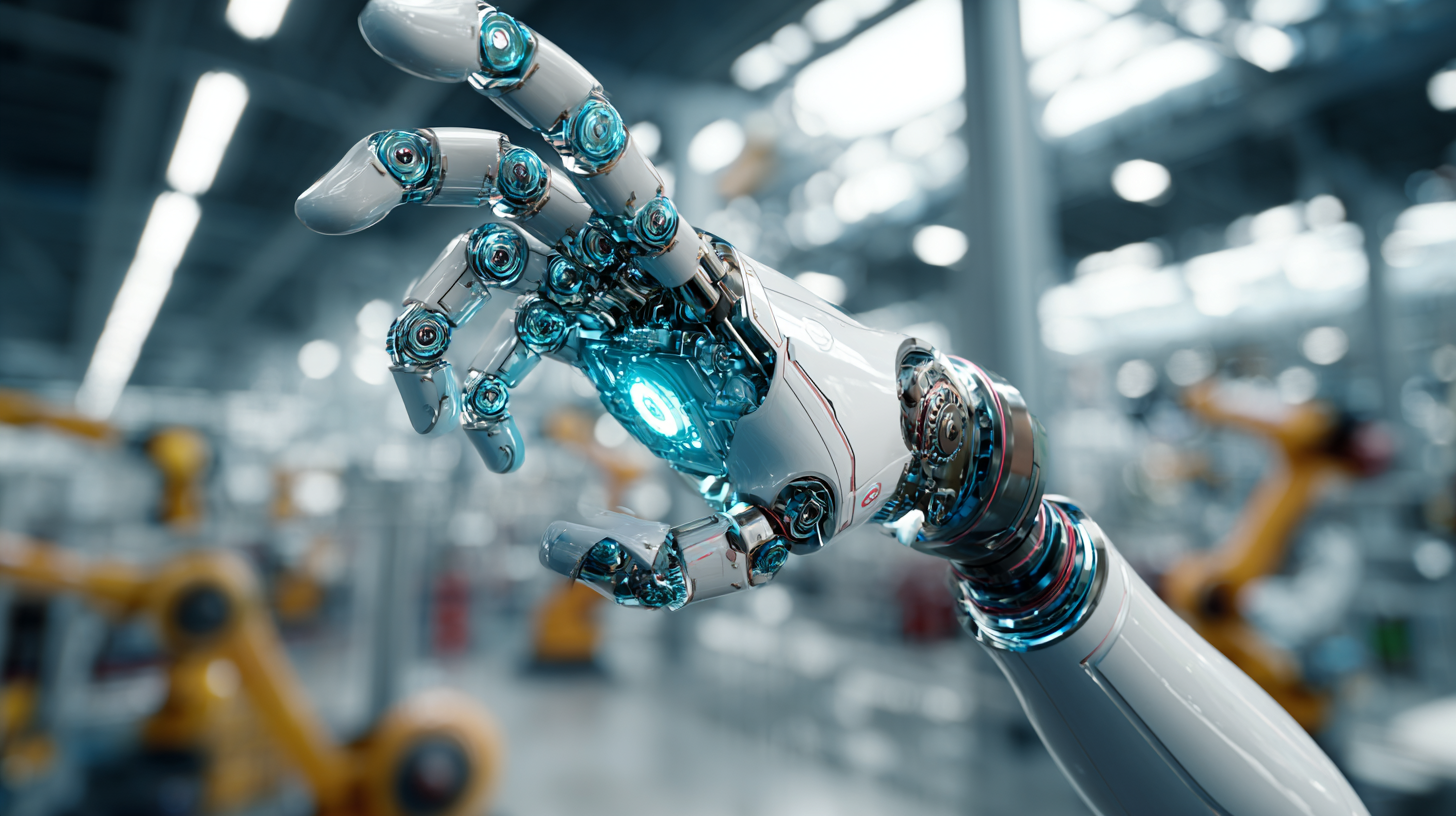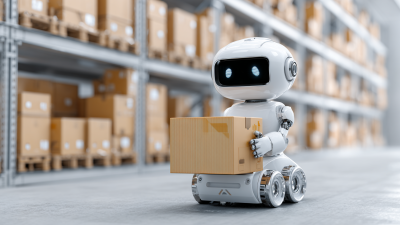

14, Raghava Enclave, Transport Road, Secunderabad, Hyderabad (500009)
©2024 All Rights Reserved by excitechrobot.com
As industries increasingly seek efficiency and cost-effectiveness, the role of Robot Simulation technology emerges as a transformative force in automation. According to a recent report by MarketsandMarkets, the global robotics simulation market is expected to reach $121 million by 2025, reflecting a compound annual growth rate (CAGR) of 24.6%. This exponential growth highlights the critical demand for advanced simulation techniques that enable manufacturers to optimize robot performance, reduce downtime, and enhance productivity without the high costs associated with physical prototyping. Moreover, a study by Automation World indicates that 67% of companies that utilize robot simulation experience a significant decrease in production errors, demonstrating the practical benefits of this technology. By leveraging Robot Simulation, organizations can not only visualize and test robotic processes in a virtual environment but also drive the next wave of innovation in the automation landscape, paving the way for smarter and more efficient manufacturing solutions.

Robot simulation technology plays a crucial role in the automation landscape, offering a virtual environment where robotic systems can be tested, validated, and optimized before deployment. This technology enables engineers to model complex industrial processes and simulate their interactions with robots, ensuring that any potential issues can be addressed early on. By creating realistic scenarios, companies can streamline operations and minimize downtime, ultimately enhancing productivity and efficiency.
Tips: When implementing robot simulation, start small with simple tasks and gradually increase complexity. This approach helps in understanding the capabilities and limitations of your robotic systems without overwhelming your resources.
Moreover, the importance of robot simulation extends beyond just testing. It serves as a vital tool for training operators and engineers, allowing them to interact with simulation models without the risks associated with live environments. This practical experience helps build confidence and expertise, which is essential for seamless integration of automation technologies in the workplace.
Tips: Invest in user-friendly simulation software to foster quick adoption among your team. Providing access to training resources within the simulation platform can significantly enhance understanding and facilitate a smoother transition to automated systems.
The realm of industrial automation is experiencing a paradigm shift with the advent of modern robot simulation technology. These sophisticated simulators integrate advanced algorithms and artificial intelligence to create highly accurate virtual environments. According to a report by MarketsandMarkets, the robot simulation market is expected to grow from USD 1.9 billion in 2020 to USD 4.9 billion by 2026, reflecting a CAGR of 16.9%. This increase highlights the critical role simulators play in optimizing robotic operations, allowing businesses to visualize and test their automation strategies before implementation.
Key features of contemporary robot simulators include the capability to perform real-time simulations, enhanced graphic rendering, and intuitive user interfaces. These tools enable engineers and developers to train robots in a risk-free virtual space, improving the accuracy of programming and reducing the chances of costly errors in the physical environment. A study from ABI Research indicates that companies utilizing robot simulation can reduce development time by up to 30%, further emphasizing the efficiency gains achievable through this technology. Moreover, the ability to integrate machine learning allows for continuous improvement in robotics applications, making simulations not only a preparatory tool but also a means of ongoing optimization.
| Feature | Description | Benefits |
|---|---|---|
| Real-time Simulation | Allows users to simulate robotic operations in real-time for immediate feedback. | Improves decision-making and reduces downtime. |
| 3D Visualization | Provides a three-dimensional view of the robotic systems and their environments. | Enhances understanding and planning of robotic tasks. |
| Compatibility with Different Robots | Supports a wide range of robot models and types. | Allows users to simulate various scenarios across different robots. |
| Customization Options | Users can customize robot parameters, tasks, and environments. | Tailors simulations to specific needs and improves relevance. |
| Integration with AI | Incorporates artificial intelligence for advanced decision-making processes. | Enhances the adaptability and efficiency of robotic systems. |
| Collision Detection | Simulates and alerts for potential collisions in the robotic workspace. | Improves safety and reliability in operation. |
The integration of robot simulation technology is reshaping various industries by enhancing efficiency and optimizing workflows. In modern manufacturing, simulation software plays a pivotal role in modeling processes, allowing manufacturers to test and refine their operations in a virtual environment before implementation. This proactive approach minimizes downtime and reduces costs, establishing a robust framework for continuous improvement in production lines.
Recent advancements in simulation tools have further accelerated this transformation. New AI-based libraries and models are enabling developers to create sophisticated simulations that closely mimic real-world scenarios. This innovation empowers companies to adopt collaborative robots and digital twins, enhancing operational performance and adaptability. As industries embrace automation, the focus on realistic simulations becomes crucial in training personnel, ensuring that they are well-prepared for the complexities of modern machinery and processes. These advancements indicate a promising future for automated systems across sectors, driving efficiency and fostering innovation.
The chart below illustrates the applications of robot simulation technology across different industries, showcasing the percentage of usage in manufacturing, healthcare, logistics, and others.
The implementation of robot simulation technology presents significant challenges and limitations that organizations must navigate. According to a report by Grand View Research, the global market for robotic simulation software is expected to reach $2.9 billion by 2027, indicating a robust interest in this technology. However, many enterprises encounter hurdles such as high initial costs and the need for specialized knowledge to effectively utilize these simulations.
 A study by the International Federation of Robotics revealed that 63% of companies cited a lack of skilled workforce as a primary barrier to adopting advanced robotic solutions.
A study by the International Federation of Robotics revealed that 63% of companies cited a lack of skilled workforce as a primary barrier to adopting advanced robotic solutions.
Moreover, the accuracy and reliability of simulations are critical concerns. While simulation can predict robot behavior under various conditions, discrepancies between simulated and real-world performance can lead to costly miscalculations. Research from Deloitte highlights that 38% of organizations have experienced significant setbacks due to reliance on flawed simulation models. These challenges necessitate a careful, strategic approach to robot simulation technology, ensuring that businesses are not only investing in advanced tools but also addressing the accompanying complexities that may hinder their automation objectives.
As automation continues to evolve, robot simulation technology plays a pivotal role in shaping the future landscape of industries worldwide. Current trends indicate a rapid acceleration in the adoption of simulation solutions, with a recent report from the International Federation of Robotics (IFR) projecting that the global robotics market will reach $210 billion by 2025. This emphasizes the vital necessity for companies to integrate advanced simulation tools that not only enhance operational efficiency but also reduce downtime during the deployment of robotic systems.
One of the key impacts of robot simulation technology is its ability to facilitate risk-free testing environments, enabling manufacturers to experiment with different scenarios without interrupting actual production. According to a study by ResearchAndMarkets, companies that utilize simulation technologies experience up to a 30% decrease in production time and a significant drop in implementation costs. This trend underscores the importance of leveraging simulated environments to fine-tune automation strategies before rollout.
**Tip:** When considering robot simulation tools, prioritize those with intuitive user interfaces and strong support for real-time data analysis. This will not only streamline the adoption process but also provide actionable insights to enhance decision-making capabilities. Additionally, engaging in continuous training for your team on these technologies can further amplify their benefits.







